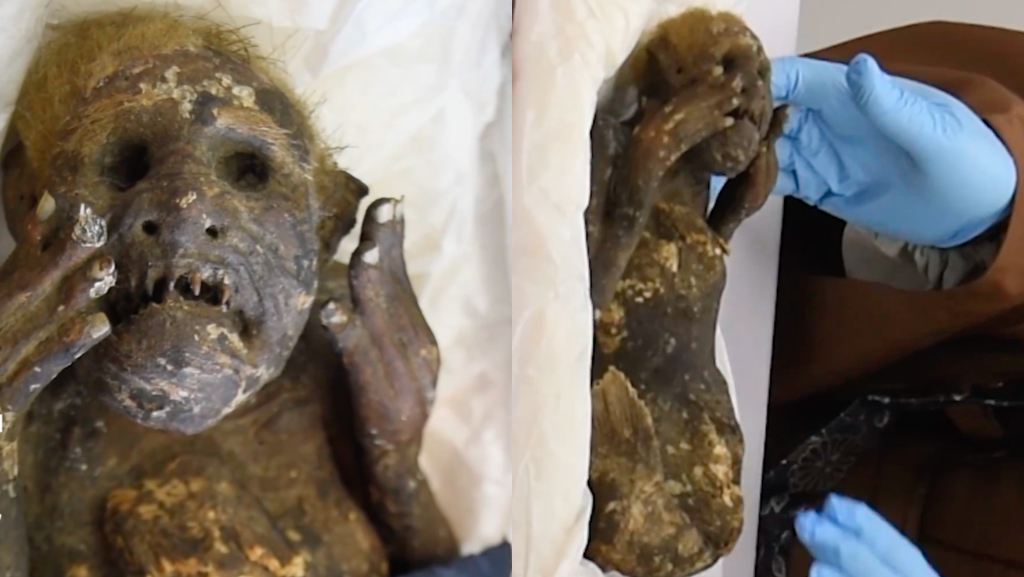Japanese scientists have solved the mystery of the “mermaid mummy” that has long been an object of worship at a temple in Okayama Prefecture.
After a year of scientific analysis, researchers concluded on Feb. 7 that the supposedly 300-year-old “mummy” is actually a molded object made out of paper, cloth, cotton and other real biological components.
The “mermaid mummy,” which measures around 1 foot, was previously found in a paulownia box with a note that read: “A mermaid was caught in a fishing net on the coast of Tosa Province (present-day Kochi Prefecture) between 1736 and 1741.”
The object reportedly belongs to Enjuin temple in Asakuchi, Okayama prefecture. It earned its name for having an upper body that appears to be human and a lower body that resembles a fish tail.
Five researchers from the Kurashiki University of Science and the Arts, along with other organizations, began analyzing the figure in February last year.
The researchers noted that the “mermaid mummy” had front-facing eye sockets, ears, nose, hair on its head and five fingers on the ends of each arm.
The team used a range of techniques, including X-rays, a CT scanner, radiocarbon dating and electron microscopy, and found that the mummy contained real biological parts.
Its lower body contained bones from the tail and dorsal fins of a Sciaenidae fish and its jaw was that of a carnivorous fish. The surface of its upper body also had puffer fish skin and glued-on animal hair.
Based on its lower body’s scales, researchers believe that it may have been created in the late 1880s.
The researchers also determined that the body’s interior was a mold of cloth, paper and cotton.
Its head was almost entirely made of cotton, along with plaster and similar materials, while the surface of its upper body was made of thin layers of paper.
The researchers also could not detect any DNA in the “mermaid.”
The analysis suggests that it was likely created to trick people into believing…
Read the full article here





